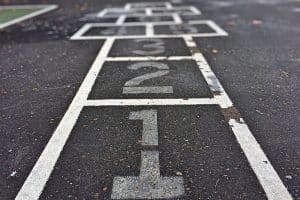Continuous Improvement: Addressing the Needs of Struggling Students
Education Domain Blog
 This post first appeared on CompetencyWorks on January 17, 2017.
This post first appeared on CompetencyWorks on January 17, 2017.
This is the twenty-sixth article in the series Implementing Competency Education in K-12 Systems: Insights from Local Leaders.
After the first few years of transition, districts begin to have the bandwidth to look more deeply at where students are not advancing or are at a lower level academically than their age-based grade. Although not necessarily done in a linear fashion, there are three ways that districts and schools begin to respond to struggling students. First, they create strategies and direct more resources to struggling students. This often opens a conversation about how to meet students where they are so they build their pre-requisite skills rather than always depending on scaffolding that makes curriculum accessible but often leaves students in the same situation — taking on higher level courses without a strong foundation. (For more on this topic see Meeting Students Where They Are: Academic Domains and The Accountability Paradox.) Second, they begin to explore more deeply how habits of learning impact student achievement, building out their capacity to nurture students. Third, they seek out ways to improve instruction overall so that more teachers within the school have the disciplinary knowledge to help students advance.
At Sanborn Regional High School, the Freshmen Learning Communities are designed to help ninth graders build the skills they need for success and identify where students need additional support. They are finding that the conversations about students with special education needs are more focused on learning and progress than behaviors. The understanding of standards, differentiated instruction, and accommodations for assessments has become much more clear and intentional.
Pittsfield Middle and High School (PMHS) is exploring different ways to respond to the needs of students who are struggling or enter school more than one year behind in grade level. They’ve developed a strong intervention system, with an emphasis on reaching students in middle school. They have reading and math specialists and are providing double doses of reading and math. They also are reaching into elementary school with a special education teacher at every grade level, working to help students learn foundational skills. Still they aren’t seeing the results that they would like so they are continuing to explore what else they can do to ensure students are successfully learning.
High school is harder, as many of the students who are struggling have given up and don’t want to be in school at all. PMHS worked with the Virtual Learning Academy Charter School to provide competency recovery for students. They then began to build the capacity for competency recovery into Pittsfield, with resources set aside to support students during the summer. They also are exploring ways to use personalized learning to respond to the needs of struggling students, creating opportunities to build their skills through areas of interest instead of just repeating courses.
Lindsay Unified School District continues to innovate to better support students who don’t have the skills they need. They have expanded the capacity of teachers to support literacy across the curriculum to better respond to English language learner students at the bridging level. They have added special programming for incoming freshmen who have weak foundational skills, and they offer online learning to fill gaps and build fluency. They have expanded their emphasis on habits of learning, what they refer to as lifelong learning skills, to be more powerful in engaging students and asking them to reflect on the skills they need to succeed. They are now beginning to think about ways they can better serve the group of students that are disengaging from high school by offering more flexibility, opportunities to work and take college courses, and support to address issues in their lives that may be getting in the way of school.
For more information, explore this whole blog series:
- Blog #1 Introducing Implementing Competency Education in K–12 Systems: Insights from Local Leaders
- Blog #2 What Is Competency Education?
- Blog #3 Investing in Shared Leadership
- Blog #4 Constructing a Shared Journey of Inquiry, Shared Vision, and Shared Ownership
- Blog #5 Engaging the Community
- Blog #6 Creating the Shared Purpose
- Blog #7 Investing in Student Agency
- Blog #8 Clarifying the Overall Pedagogical Approach
- Blog #9 Configuring the Instruction and Assessment Model
- Blog #10 Constructing a Common Language of Learning
- Blog #11 Creating a Common Language of Learning: A Continuum of Learning
- Blog #12 Creating a Common Language of Learning: Rubrics and Calibration
- Blog #13 Creating a Common Language of Learning: Habits of Learning
- Blog #14 Policies for Personalization: Student Agency
- Blog #15 Policies for Personalization: Levels, Pace, and Progress
- Blog #16 Empowering Teachers
- Blog #17 Preparing for Leadership Lifts
- Blog #18 Rollout Strategies
- Blog #19 Preparing Teachers for Personalized Classrooms
- Blog #20 Leveling and Parent Conversations
- Blog #21 Making Mid-Course Corrections and Refinements
- Blog #22 Refining the Instructional Model and Enhancing the Instructional Cycle
- Blog #23 Three Ways Districts Stumble in Implementation
- Blog #24 Continuous Improvement and Innovation
- Blog #25 Continuous Improvement: Improving Performance and Personalization through Powerful Data